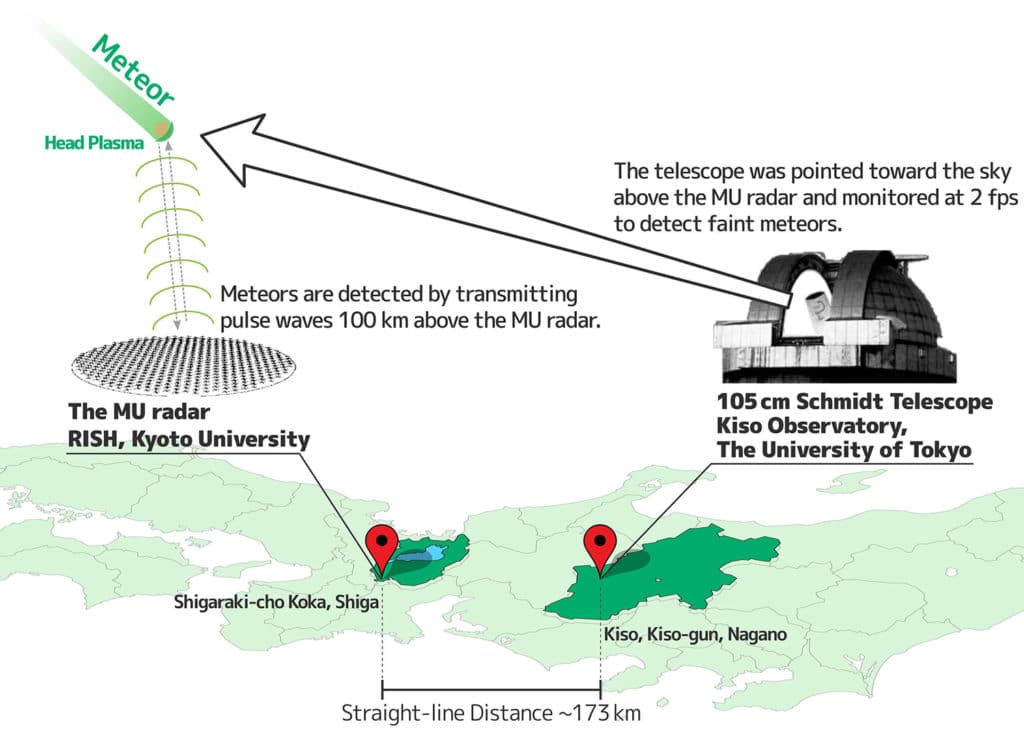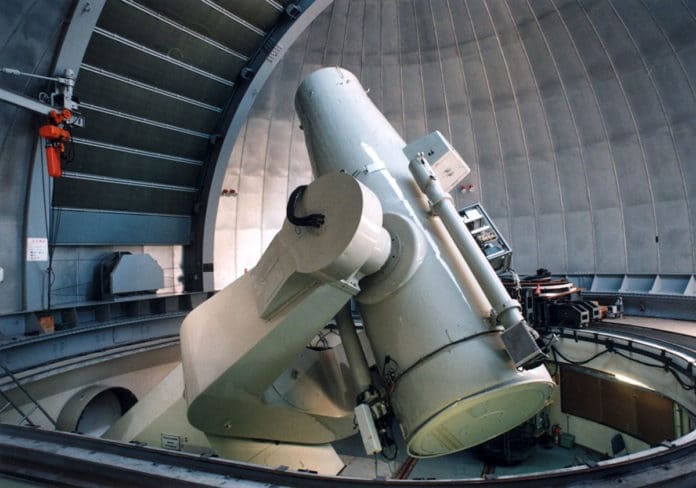A group of researchers from the Institute of Astronomy at the University of Tokyo has combined specific observations from radar and optical telescopes to learn more about the so-called interplanetary dust falls to Earth every day. This dust is essentially an untold number of small faint meteors, discarded remnants of asteroids and comets that pass by the Earth.
Both radar and optical observations of meteors are important to understand the size distribution of the interplanetary dust. The radar spotted them, and the telescope collected useful information, such as mass and composition. By investigating the size and composition of the interplanetary dust, astronomers can indirectly investigate the activity and makeup of the parent bodies.
“When in space, interplanetary dust is practically invisible. However, around 1,000 kilograms falls to Earth every day in the form of tiny meteors, which appear as bright streaks in the night sky,” said astronomer Ryou Ohsawa. “We can observe these with ground-based radar and optical instruments. Radar is useful as it can cover wide areas and gather vast readings, but optical telescopes can give more detailed information useful for our studies. So we set out to bridge this gap to boost our observational capacity.”

The combination of the two techniques was fundamental to obtain a statistically significant result. Ground-based radar is very good at detecting the motion of meteors, but it does not reveal much information about the mass or composition of the meteors. In contrast, optical telescopes and sensors are ideal for collecting those details based on the light given off by falling meteors due to interaction with the atmosphere. But, telescopes have a limited field of view and until.
The first observation was carried out in 2009-2010 using Middle and Upper Atmosphere Radar (MU radar) and an image-intensified CCD camera. And the second observation was carried out in 2018 using the MU radar CMOS camera, Tomo-e Gozen, mounted to the 1.05-meter Kiso Schmidt Telescope. The two instruments are 173 kilometers (107 miles) apart, which is important for the researchers: the closer the facilities, the more accurately the data from them can be correlated. The radar points directly upward, while the Kiso telescope can be angled and was aimed 100 kilometers (62 miles) above the radar site.
Of all the meteors observed, 228 were seen with both radar and optical telescope – was enough to derive a statistically reliable relationship to connect the two instruments. “Data analysis was laborious,” said Ohsawa. “A sensitive instrument called the Tomo-e Gozen wide-field camera mounted to the Kiso telescope captured over a million images a night. This is too much for us to analyze manually, so we developed software to automatically recognize faint meteors.”
“From what we’ve learned here, we hope to extend this project and begin using radar to investigate the composition of meteors. This could help astronomers explore comets and aspects of solar system evolution like never before.”
